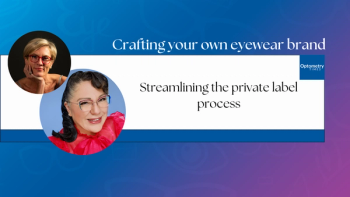
- January Digital Edition 2020
- Volume 12
- Issue 1
Why OAB should be considered before cataract removal
Discontinuation of OAB medication dramatically improves the signs and symptoms of dry eye in a 65-year-old patient.
One of my most gratifying
She did admit to working long hours, drinking little water (so she could avoid running to void frequently during working hours) and lots of coffee to keep her alert in the evening hours of her demanding shift.
She also was taking oral medication to temper her over-active bladder (OAB). Discontinuation of the OAB medication dramatically improved the signs and symptoms of dry eye in my nurse-patient.
What is overactive bladder?
Overactive bladder (OAB) is a prevalent condition in both men and women. It may have a significant impact on overall quality of life, sexual function, sleep, and mental health. OAB consists of urinary urgency with or without urge incontinence, often accompanied by frequency and nocturia (nighttime urination).1
Every time I examine a women, I think of my patient and her OAB. However, OAB is common in both men and women with equal prevalence.
The coexistence of benign prostatic hyperplasia (BPH) with OAB can worsen quality of life in men. BPH-also called prostate gland enlargement- is a common condition as men get older. The prostate gland is located beneath the bladder and if enlarged, begins to block urine flow.
An enlarged prostate gland can cause uncomfortable urinary symptoms such as a weak, slow urinary stream; a hesitancy and straining to urinate; prolonged voiding; dribbling at the end of urination; an inability to empty the bladder completely; the frequent passage of small amounts of urine; and nocturia. Other symptoms of BPH maybe the uncontrollable need to void, symptoms of urinary urgency, frequency, and incontinence.
Anticholinergic drugs that slow the bladder’s contractions, such as oxybutynin, are the mainstays of therapy for OAB. In men, it may be used in combination with BPH medication.
Treatment and dry eye
Anticholinergic drugs however, are notorious for the side effect of provoking
Lifestyle changes can reduce the need to therapeutically manage OAB.2 These changes include reducing fluid intake, especially alcohol and caffeine; avoiding medications that stimulate muscles in the bladder neck and prostate such as pseudoephedrine and other decongestants; and reducing or changing diuretic medication use for treating high blood pressure.
Another strategy is timed urination (following a bathroom schedule instead of “urge”). Excercises to strengthen the pelvic floor (Kegel excercises) are also beneficial in controlling OAB symptoms. Biofeedback is another option. Botox (onabotulinumtoxin A, Allergan) bladder treatments are another alternative to control OAB symptoms. Botox works for the bladder by relaxing the muscle of the bladder wall to reduce urinary urgency and incontinence: it can help the bladder muscles from squeezing too much. The effects of Botox last up to six months.
Another potential treatment is neuromodulation therapy. This type of treatment sends electrical pulses to nerves that share the same path for the bladder. In OAB, the nerve signals between your bladder and brain do not communicate correctly. These electrical pulses help the brain and the nerves to the bladder communicate so the bladder can function properly and improve OAB symptoms.
Look for other solutions
Remember to carefully consider the
Empower your patient to have important conversations and be involved in decision-making with every member of their healthcare teams to limit or avoid oral therapies that impact the ocular surface system.
References:
1. Eapen RS, Radomski SB. Review of the epidemiology of overactive bladder. Res Rep Urol. 2016 Jun 6;8:71-6.
2. Urology Care Foundation. What Is Overactive Bladder (OAB)? Available at: https://www.urologyhealth.org/urologicconditions/ overactive-bladder-(oab). Accessed 1/17/20.
Articles in this issue
over 5 years ago
Why ODs should treat dry eyealmost 6 years ago
Remember the basics as dry eye treatments expandalmost 6 years ago
Go beyond fish oil with astaxanthin in krill oilalmost 6 years ago
Cotton-wool spots lead to tissue loss and RNFL defectalmost 6 years ago
SD-OCT shows schisis advancements due to sickle cellalmost 6 years ago
Unlock the potential of refractive surgeryalmost 6 years ago
Cataract surgery problem solving: Is technology the answer?almost 6 years ago
Look at more than the optic nerve head in glaucoma patientsalmost 6 years ago
Sights are set on perfect vision in 2020Newsletter
Want more insights like this? Subscribe to Optometry Times and get clinical pearls and practice tips delivered straight to your inbox.













































.png)


